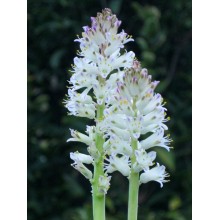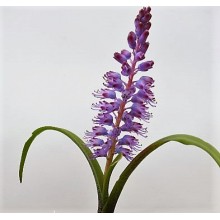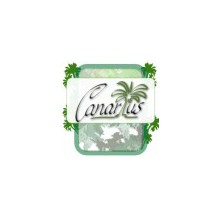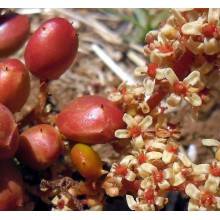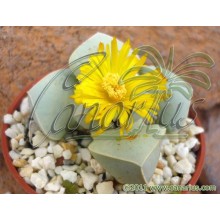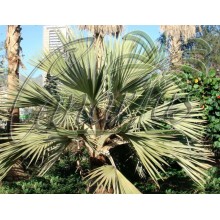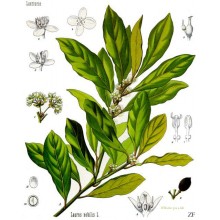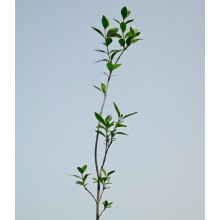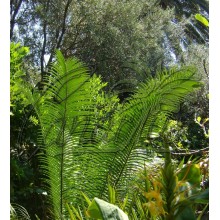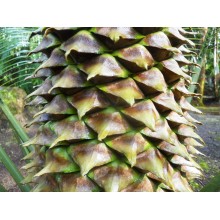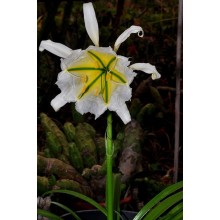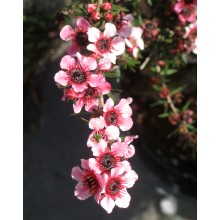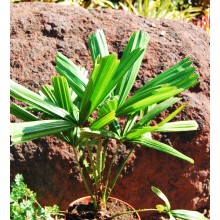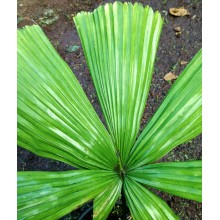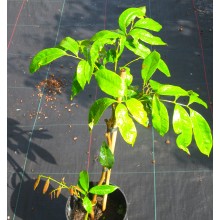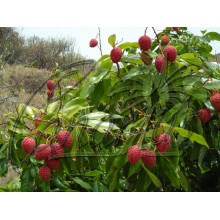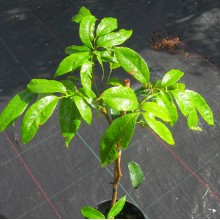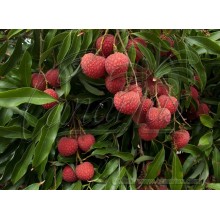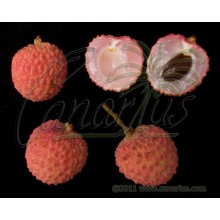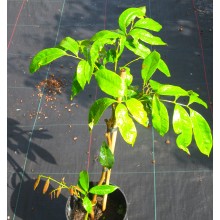General Plants There are 1820 products.

If you like exotic plants, you just came to the right place. Canarius offers the hard-to-find exotic plants which are seldom available in garden centres. Our shop has natural species as well as rare hybrids. We offer exotic plants from the Canary Islands.
Orders are sent to anywhere in Europe and also worldwide. Parcels will reach your home in a few days after shipping (but we also need some days for processing). Feel free to contact us if you have any questions.
Subcategories
-
Succulents
World deserts and dry areas are home to the most interesting plants. Canarius offers an increasing selection of succulent plants of maximum quality, because they are grown outdoors, under the full sun of the Canary Islands.
Succulents or "fat plants" are water-retaining species, adapted to dry conditions. They store succum (juice, water) in their leaves, stems or roots, and often show a stout and fleshy appearance.
-
Exotics
Exotic plants are species from other parts of the world, and they usually have ornamental qualities: a lush foliage, colorful flowers, unusual shapes... Here you can find a great variety of exotic plants: from Bromeliads and Heliconias, to pamls and houseplants.
Exotic plants do not have a particular use. Collectors buy this kind of plants for their rarity, for indoor or outdoor decoration, depending on their features.
-
Fruit, Herbs & Medicinals
Fruit, Herbs & Medicinal plants are focused on getting a better health. In this section, each type of plant produce healthy effects, both fruit trees (Feijoa, Pineapple, Fina de Jete...) and plants for health, such as Graviola, Aloe vera, Callisia fragrans...
In the normal metabolism of all living beings, the organism produces some substances from nutrients latent in the environment; some of these chemicals are part of the process in all (or almost) sort of species. Normally, the useful compounds are concentrated in some of its parts: leaves, seeds, flowers...
Find out your advisable plant and buy it online!
-
Special
On canarius.com we try to remove limits in the field of botany. On our online store we try to facilitate the purchase/sale of plants to anywhere in the world. That's why, we grow from the most common species to the most special plants, as we can see in this section.
-
Lachenalia liliiflora
Lachenalia liliiflora
Each bulb bears two lanceolate leaves per year and produces showy spikes of white flowers, about 20 cm tall in March or April, just before leaves die off.
10,60 € -
Lachenalia splendida
Lachenalia splendida
Winter growing buln, native to sandy plains, each bulb bears two leaves. In February it produces showy spikes of sessile pink and purple flowers. It slowly clumps and will fill the pot in 3 or 5 years.
8,80 € -
Lannea edulis
Lannea edulis
This species bears edible fruits and it grows just 20-50 cm tall. with a thick underground trunk or caudex, which helps it to survive drought and fires. Sometimes it is called the "underground tree".
92,30 € -
Lapidaria margaretae
Lapidaria margaretae
Cont.= 6 cm. Beautiful living-stone plant from Namibia. Lapidaria is a classic of plant mimicry to rocks. Give filtered sun or light shade and water sparingly. It will take 25° F (-4 ° C) for short periods
10,70 € -
Latania lontaroides
Latania lontaroides
Beautiful palm native to the Mascarene Islands. They have stiff fan shaped leaves, that become red during youth. They make excellent pot plants for decades and they are very easy to grow, but they are frost sensitive.
60,00 € -
Lawsonia alba - Henna
Lawsonia alba - Henna
Henna is the most ancient dye, widely used from Northern Africa to India. It is a compact bushy tough shrub that can take frost to drought.
35,00 € -
Lepidozamia peroffskyana
Lepidozamia peroffskyana
h= 60-70 cm. Base: 3-5 cm. Possibly the most ornamental of all Cycads. It is beautiful in all its parts. Leaves are shiny, elegant, spineless, of a rich dark green. Cones are huge and fascinating. Takes light frosts and grows very well in the warmer Mediterranean.
72,00 € -
Lepidozamia peroffskyana - LARGE
Lepidozamia peroffskyana - LARGE
h= 80-100 cm. B=7-9 cm. Possibly the most ornamental of all Cycads. It is beautiful in all its parts. Leaves are shiny, elegant, spineless, of a rich dark green. Cones are huge and fascinating. Takes light frosts and grows very well in the warmer Med
147,00 € -
Leptochiton quitoense
Leptochiton quitoense
This is one of those American Amaryllids that drive collectors crazy. Each bulb produces one very large flower similar to Hymenocallis or Pancratium, but up to 18 cm in diameter!
108,30 € -
Leptospermum scoparium - Manuka Tea Tree
Leptospermum scoparium - Manuka Tea Tree
Elegant evergreen shrub with deep green fragrant leaves that bears small flowers of white to pink in colour. It is resistant to moderate frost. This plant is called Manuka and it is known for medicinal purposes but also because it makes a special bee honey. There are also reports of therapeutic properties.
19,80 € -
Licuala spinosa
Licuala spinosa
This is the hardiest species in the genus Licuala, resistant to drought, wind, coastal conditions and short light frosts. It is a clumping palm from SE Asia. Its leaves are fantastic, glossy pinwheels.
72,00 € -
Litchi chinensis 'Calcutia'
Litchi chinensis 'Calcutia'
This well-known cultivar from India is late bearing and produces a rather large fruit, of about 22 g, with a deep red colour. It is a very good producer but it is (thankfully) not vigorous, so it stays rather low and wide.
56,40 € -
Litchi chinensis 'Early Large Red'
Litchi chinensis 'Early Large Red'
Classic cultivar of Lychee. It is a subtropical evergreen tree native to eastern China where it has been cultivated for thousands of years. The tree has a medium size reaching up to 2-3 m (6-8 ft).
66,40 € -
Litchi chinensis 'Fay Zee Siu'
Litchi chinensis 'Fay Zee Siu'
Litchi chinensis 'Fee Zee Sui' -Reddish fruit with green veneer, very heart-shaped, large size, high percentage of aborted seed, early-medium harvesting.
56,40 € -
Litchi chinensis 'Kaimana'
Litchi chinensis 'Kaimana'
One of the best tasting large lychees. It is a subtropical perennial tree native to eastern China where it has been cultivated for thousands of years. The tree has a medium size reaching up to 2-3 m (6-8 ft).
66,40 € -
Litchi chinensis 'Kwai Mai Pink'
Litchi chinensis 'Kwai Mai Pink'
The "cold-hardy" lychee tree. This Chinese lychee variety produces fruits in cooler locations and and fruits very late, in mid-summer. Fruits are greenish-pink and quality is very good.
66,40 €
At the moment there are few products in this category General Plants




















